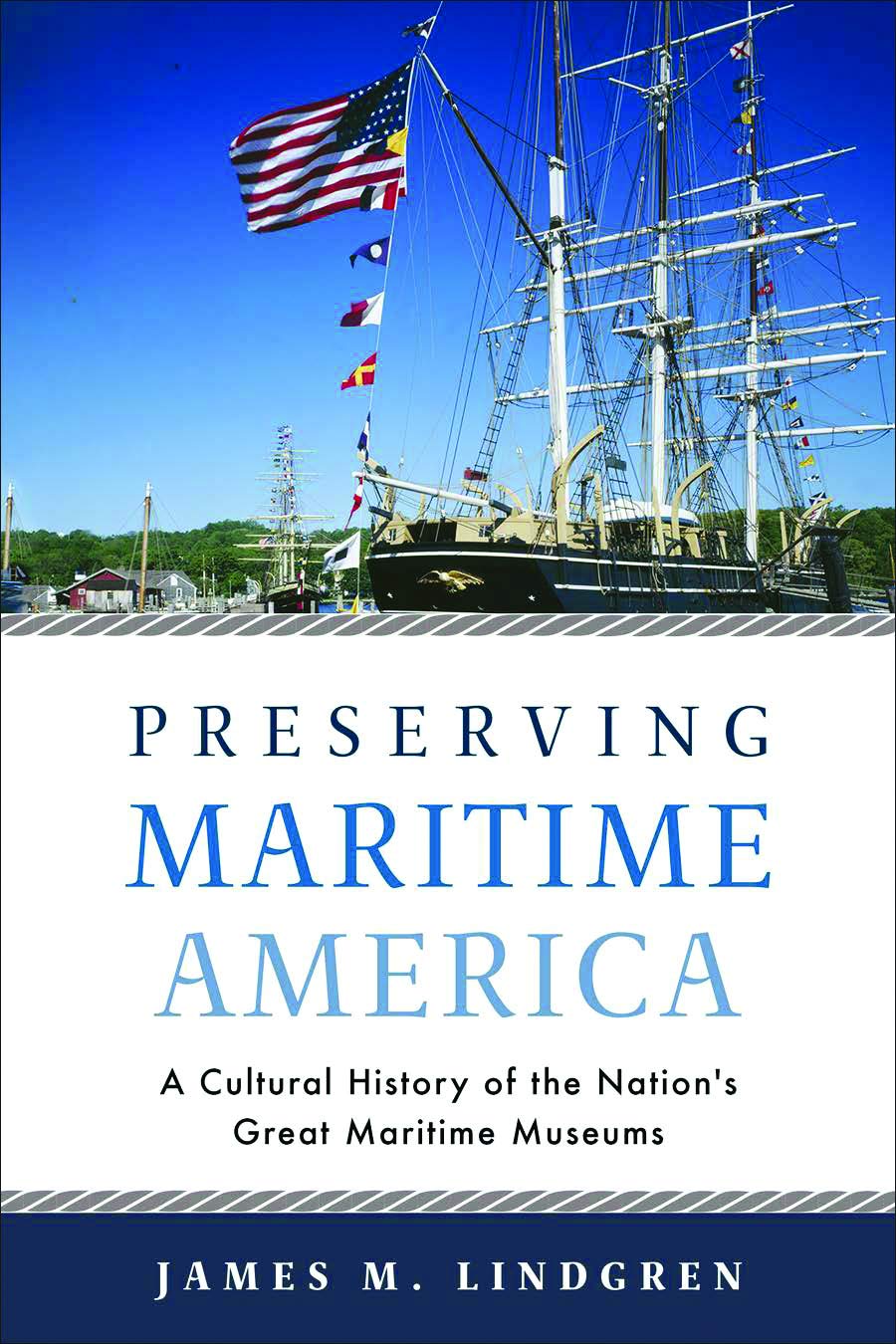Preserving Maritime America: A Cultural History of the Nation’s Great Maritime Museums
James M. Lindgren
 The origins of both United States ship preservation and maritime museums stem from the need to understand America’s symbiotic role within maritime history. Since its founding, the United States has heavily relied on the high seas, but Americans are often unaware of their impact on maritime history. Many notable global powers, such as Britain, Netherlands and other countries, have long-established national maritime museums to preserve and cultivate their seafaring traditions, while America’s maritime past has been defined by local and regional private institutions. In this unprecedented cultural history, Preserving Maritime America: A Cultural History of the Nation’s Great Maritime Museums, James M. Lindgren examines America’s rise in the nineteenth-century as a commercial power, the decline of its flagged fleet during the twentieth-century, and how museums have played a vital role in telling the story of America’s interaction with the sea. He does this by exploring six maritime museums that pioneered the way Americans experience and engage with their maritime past, which include Salem’s East India Marine Society, New Bedford Whaling Museum, Mystic’s Marine Historical Society, San Francisco Maritime Museum, New York’s South Street Seaport Museum, and the Mariner’s Museum of Newport News.
The origins of both United States ship preservation and maritime museums stem from the need to understand America’s symbiotic role within maritime history. Since its founding, the United States has heavily relied on the high seas, but Americans are often unaware of their impact on maritime history. Many notable global powers, such as Britain, Netherlands and other countries, have long-established national maritime museums to preserve and cultivate their seafaring traditions, while America’s maritime past has been defined by local and regional private institutions. In this unprecedented cultural history, Preserving Maritime America: A Cultural History of the Nation’s Great Maritime Museums, James M. Lindgren examines America’s rise in the nineteenth-century as a commercial power, the decline of its flagged fleet during the twentieth-century, and how museums have played a vital role in telling the story of America’s interaction with the sea. He does this by exploring six maritime museums that pioneered the way Americans experience and engage with their maritime past, which include Salem’s East India Marine Society, New Bedford Whaling Museum, Mystic’s Marine Historical Society, San Francisco Maritime Museum, New York’s South Street Seaport Museum, and the Mariner’s Museum of Newport News.
There is much to admire in this book. If Lindgren makes one thing clear, it is that there is a need to preserve America’s maritime culture and broaden global awareness, and there has been no shortage of efforts from these six iconic institutions. With varying founding agendas, from cultural preservation, local economic redevelopment, or assertion of overseas power, these six case studies displayed the complexities, promises, and pitfalls of preserving maritime America. The future of these museums came into question when faced with conflicting policymaking, chronic financial shortfalls, and the general public’s underappreciation of the nation’s formative interrelationship with the sea. They had to reevaluate and assess the missions of their institutions. Should they revolve around people, artifacts, research, the environment, social issues, economic development, community building, or a blend of these choices? Each chapter provides an in-depth view of how its respective institution handled the wavering seas and shifted their course to remain relevant. Not holding back on the unvarnished stories, Lindgren created six forceful dramas peppered with behind-the-scenes accounts coupled with descriptions of bureaucratic maneuverings. The level of research is comprehensive and impressive, providing impeccable insight for further maritime preservation efforts. By portraying the debates, conflicts, and intentions that shaped these museums, Lindgren leaves the reader with a sense of how precious these preservation efforts are for understanding America’s maritime past. These museums are fortunate to profit from Lindgren’s scholarly endeavors, in that this book will have a profound impact on the communities that these museums serve.
For many reasons, Preserving Maritime America serves as the important link between an interested, but often unknowledgeable, public and professionally trained historians and curators about what it means to be a maritime nation, the importance of preservation, and the role museums play in bridging this divide.
- Amherst & Boston: University of Massachusetts Press, 2019
- 6” x 9”, softcover, xi + 341 pages
- Illustrations, notes, index. $28.95
- ISBN: 9781625344632
Reviewed by Kristin Jøsvoll, Texas A&M University at Galveston
